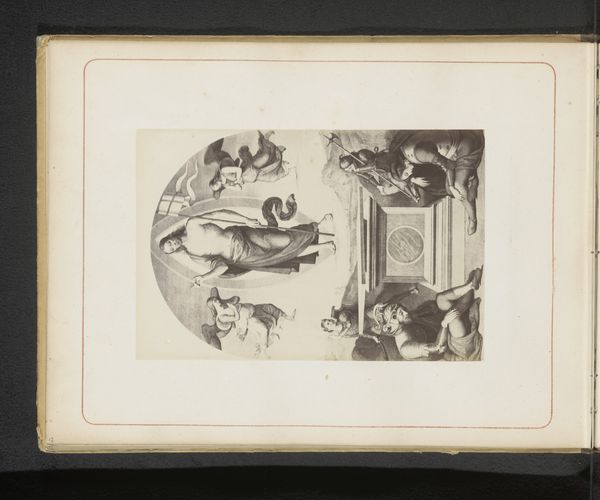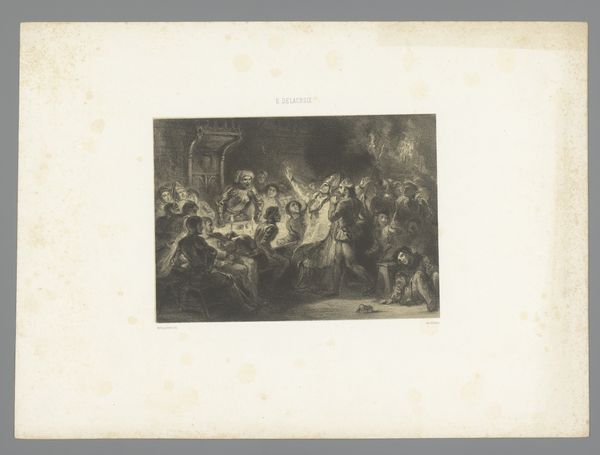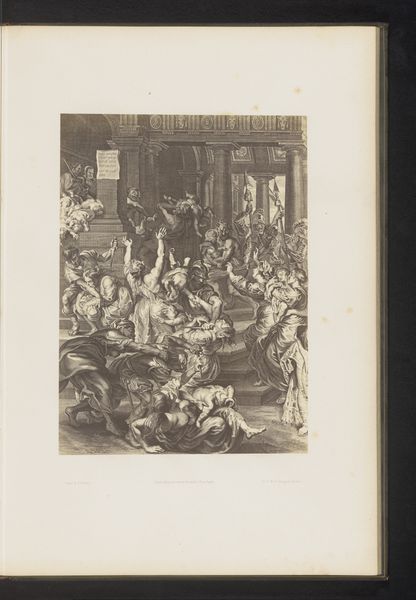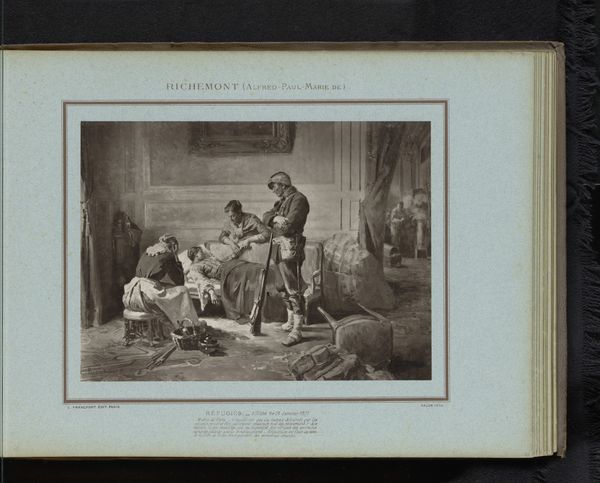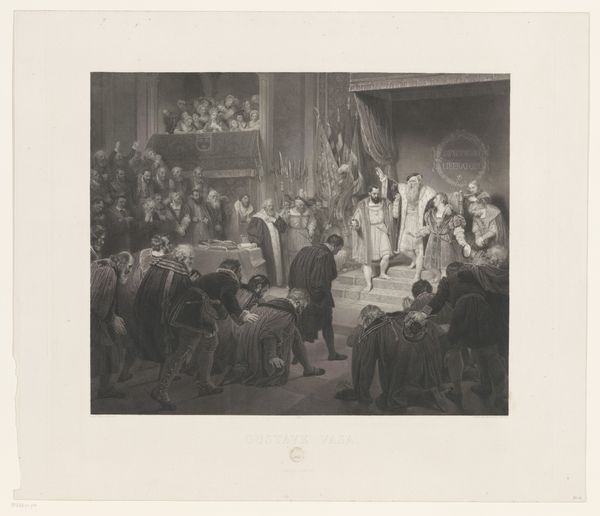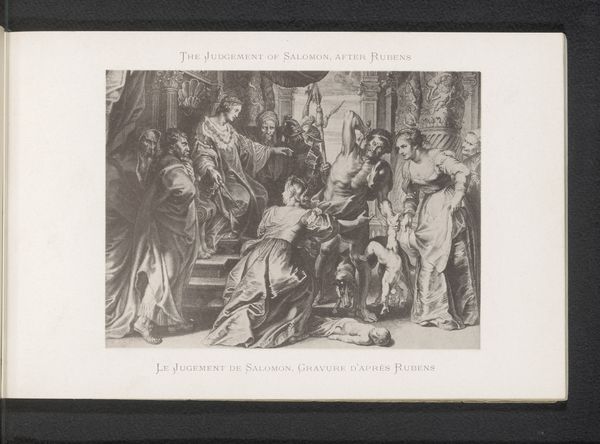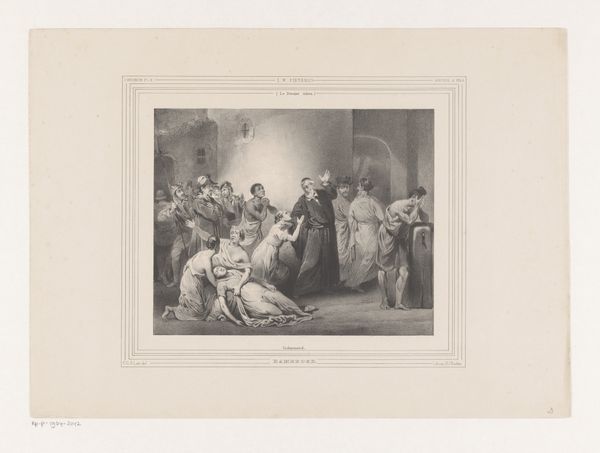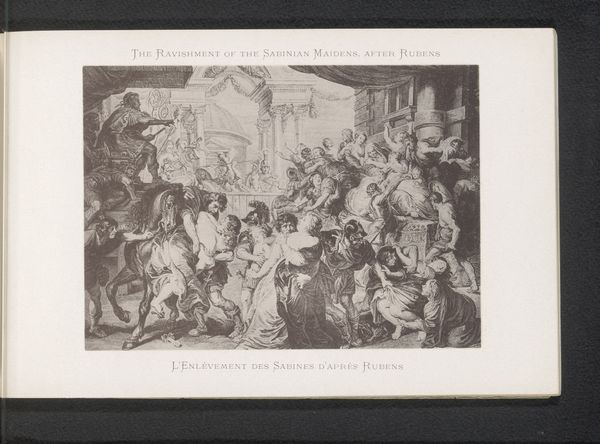
Reproductie van een schilderij van de aanval op Raymond Trencavel door Joseph-Noël Sylvestre 1884
0:00
0:00
print, etching, engraving
#
narrative-art
# print
#
etching
#
history-painting
#
academic-art
#
engraving
#
watercolor
Dimensions: height 178 mm, width 256 mm
Copyright: Rijks Museum: Open Domain
Editor: We are looking at "Reproductie van een schilderij van de aanval op Raymond Trencavel," a print made through etching and engraving, created by Joseph-Noël Sylvestre in 1884. The scene is chaotic, violent, almost operatic. What story is being told here, and how does its context inform its message? Curator: Indeed. Considering this work, "The Attack on Raymond Trencavel," through a historical lens reveals the charged atmosphere of late 19th-century France. The artist is choosing a moment from the medieval past. What might be the politics of depicting this specific attack, and do you think Sylvestre intended to glorify the violence, or to critique it? Editor: That's a complex question. Given its academic style, my first thought is that it's romanticizing a specific national narrative...maybe simplifying a brutal conflict for the sake of patriotism. Curator: Precisely. Think about the role of academic art at this time. These history paintings were frequently displayed in public salons and reproduced as prints for mass consumption, thereby shaping a particular understanding of the nation’s identity and its past glories—or perhaps masking uncomfortable truths through aestheticization? Are there elements of this piece that might signal a darker reading? Editor: Perhaps the unflinching depiction of violence within a sacred space...the suggestion that power, even religiously sanctioned, is inherently brutal? But still, I’m uncertain… Curator: Exactly! The ambiguity itself reveals something crucial about how artists at the time were grappling with questions of national identity, historical memory, and the problematic glorification of violence, all while navigating the structures of the art world. The Salon system demanded spectacle and historical grandeur, inevitably shaping even the most potentially critical perspectives. Editor: It's interesting how a seemingly straightforward historical depiction can open up so many questions about the artist's intention and the broader social context. Thank you! Curator: A vital reminder that art never exists in a vacuum but is actively shaping and reflecting societal values and anxieties.
Comments
No comments
Be the first to comment and join the conversation on the ultimate creative platform.


